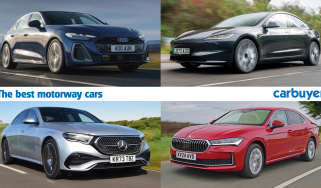Car paint: costs, finishes, pros and cons explained
Many paint colours on new cars can cost hundreds or even thousands of pounds. Don’t get caught out
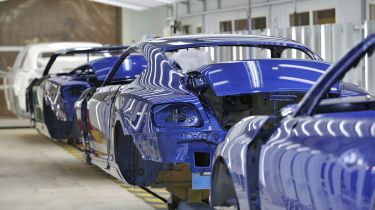
When you think about the optional extras on new cars, it’s often the useful ones such as climate control, heated seats or sat-nav that come to mind. Yet along with cosmetic items such as larger alloy wheels, it’s frequently paint that makes up the largest chunk of what we spend on extras.
This is because unless you happen to love the colour that comes as standard, you’re likely to spend more to choose the shade you like best – and makers know it. The colour of your car is one of the most significant elements that affects how it looks, and a big draw of buying a new car in the first place is getting a model that suits you perfectly.
Colour costs
It used to be the case that car makers gave buyers a choice of paint colours with a ‘flat’ finish and these basic colours wouldn’t add any additional cost. However, if you wanted a metallic, pearlescent or even matt paint colour, you would pay extra.
This isn’t really the case any more, though. The norm now is that the car is sold with one paint colour ‘as standard’ that you don’t have to pay for, and if you want any other colour – basic, metallic or anything else – you’ll have to pay for it. Often the standard paint colour is unappealing in some way – it’s either very dull or very extroverted – to encourage you to spend extra.
For example, the Peugeot 308 hatchback comes in the rather eye-catching Olivine Green as standard, but opting for white, black or grey costs an additional £650. Since most people tend to prefer more understated colours, many will choose to pay extra not to have the bright green paint.
Another example is the Nissan Juke, where the only no-cost colour is Flame Red. Any other shade will set you back a minimum of £250 (white), while the most expensive is £745. And contrasting roofs are in fashion again, so you can spend another few hundred pounds if you want a two-tone look.
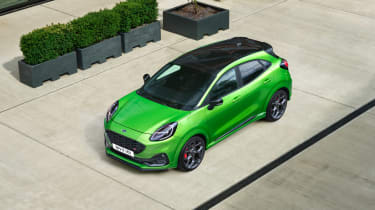
Why is paint now so expensive?
We talked to an industry spokesman to get to the bottom of the price of paint and he said there were a number of factors behind manufacturers now charging more for it. He told us that the growing popularity of white meant fewer people were spending more on metallic or colours.
“Obviously, paint is something manufacturers have to purchase. And with fewer buyers choosing metallic as a cost option, they have to plug the financial gap by charging a nominal fee,” he said.
Paul Normyle, boss of car paint repair company Shine, told us: “There was an EU directive back in 2006-07 that all paints should be water-based rather than oil-based. The R&D for all colours to be created in this way becomes expensive. This, of course, has a knock-on effect – and somebody has to pay for it.”
However, the Society of Motor Manufacturers and Traders – the representative body for the industry in the UK – believes that manufacturers are trying to recoup the cost of the extra standard equipment fitted to most new cars these days. A spokesman said: “Buyers might get USB ports or air-conditioning, but with the cost of cars not rising in accordance with the advances in technology, makers could be charging for paint instead.”
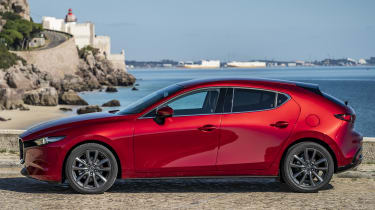
How much will a metallic finish cost you?
There’s a huge range in prices for premium paint jobs – including flat colours as a cost extra, metallic, matt and pearlescent finishes. They can cost anywhere from around £250 all the way to several thousand.
The cost of colour – price ranges for metallic paint as a cost extra:
| Manufacturer | Price range | Manufacturer | Price range | Manufacturer | Price range |
| Audi | £575 - £4,500 | Jaguar | £670 - £9,990 | Porsche | £695 - £8,837 |
| Alfa Romeo | £350 - £2,500 | Jeep | £700 - £1,100 | Renault | £600 - £750 |
| BMW | £600 - £2,500 | Kia | £575 - £1,500 | SEAT | Free |
| Citroen | £275 - £850 | Land Rover | £705 - £9,990 | Skoda | £660 - £1,045 |
| Dacia | £650 | Lexus | £250 - £1,020 | Suzuki | £515 - £900 |
| DS | £575 - £825 | Mazda | £560 - £900 | Tesla | £1,000 - £2,500 |
| Fiat | £550 - £950 | Mercedes | £625 - £13,650 | Toyota | £590 - £965 |
| Ford | £525 - £1,150 | MINI | £525 - £795 | Vauxhall | £600 - £700 |
| Honda | £625 - £975 | Nissan |
£575 - £1,395 | Volkswagen | £655 - £2,065 |
| Hyundai | £550 - £885 | Peugeot | £650 - £850 | Volvo | £595 - £795 |
What can you do?
As always, doing your research is crucial. If you wait until you’re in the showroom, about to sign the paperwork and find out that a desirable paintjob adds £500 to the total, putting you over budget, then it’s already too late.
Most manufacturers allow you to configure your ideal car on their website, so you can find out how much any extra equipment or paintwork will cost. Make sure you check the paint options and factor them into your budget. For more information on research, see our article on how to choose the right car.
Paintjobs also make good haggling tools. If the dealer won’t budge on the price, ask them to throw in a desirable premium paintjob for free. Read our article on how to negotiate a car price for more information on haggling.
We’d also recommend checking the cars the dealer has in stock, as quite often these will have metallic paint to tempt customers. By buying an in-stock or pre-registered car, you may save a lot of money and you won’t have to pay extra for metallic paint. Also, the dealer may try to sell you paint protection for a few hundred pounds, so always ask yourself whether this is something you really need or not.
Car paint made simple
Check out our guide to the best car scratch removers to buy this year.
Most Popular

Omoda E5 targets rivals: now with zero deposit and APR
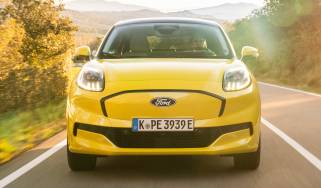
Ford Puma Gen-E driven: Electric charmer or too little, too late?
Tips & advice

Car dashboard warning lights: what does each symbol mean?

Electric car charging stations: public networks, charger types, apps and maps


